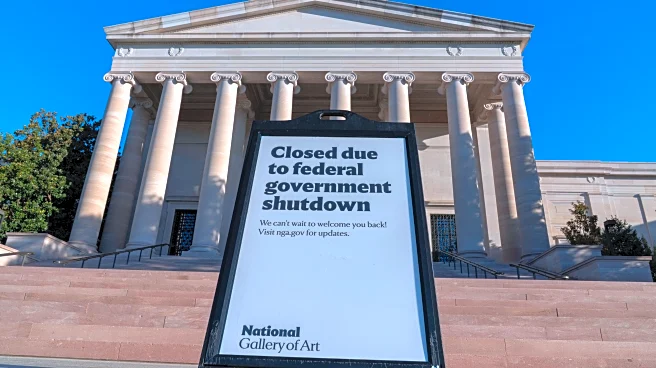What's Happening?
A federal judge has issued a temporary restraining order against the Office of Management and Budget (OMB) from proceeding with reduction-in-force (RIF) actions during the ongoing government shutdown.
The ruling affects thousands of federal employees across several departments, including Commerce, Education, Energy, Health and Human Services, Housing and Urban Development, Homeland Security, and Treasury. The Environmental Protection Agency had also issued a general 'intent to RIF' notice. The unions, including the American Federation of Government Employees, filed a lawsuit claiming the administration's move violated statutory and constitutional protections. The court's decision halts all RIF-related actions until a preliminary injunction hearing can be held.
Why It's Important?
The restraining order is a significant check on the administration's strategy to use the shutdown as a means to reduce personnel and programs, which President Trump described as an 'unprecedented opportunity.' The decision highlights the legal and ethical challenges of conducting mass layoffs during a funding lapse, with potential destabilizing effects on government operations and employee morale. The unions argue that such actions are unlawful, and the court's intervention underscores the importance of due process and legal protections for federal workers. The outcome of this legal battle could influence future government shutdown strategies and labor relations within federal agencies.
What's Next?
A preliminary injunction hearing is expected to be scheduled soon, with the temporary restraining order remaining in effect until the hearing concludes. The unions aim to prevent the administration from executing the RIFs, and the court's decision will be pivotal in determining the legality of the administration's actions. Federal employees affected by the RIF notices can challenge them before the Merit Systems Protection Board, although the board is currently shut down and not accepting new appeals. The legal proceedings will continue to unfold, with potential implications for government workforce management during shutdowns.












